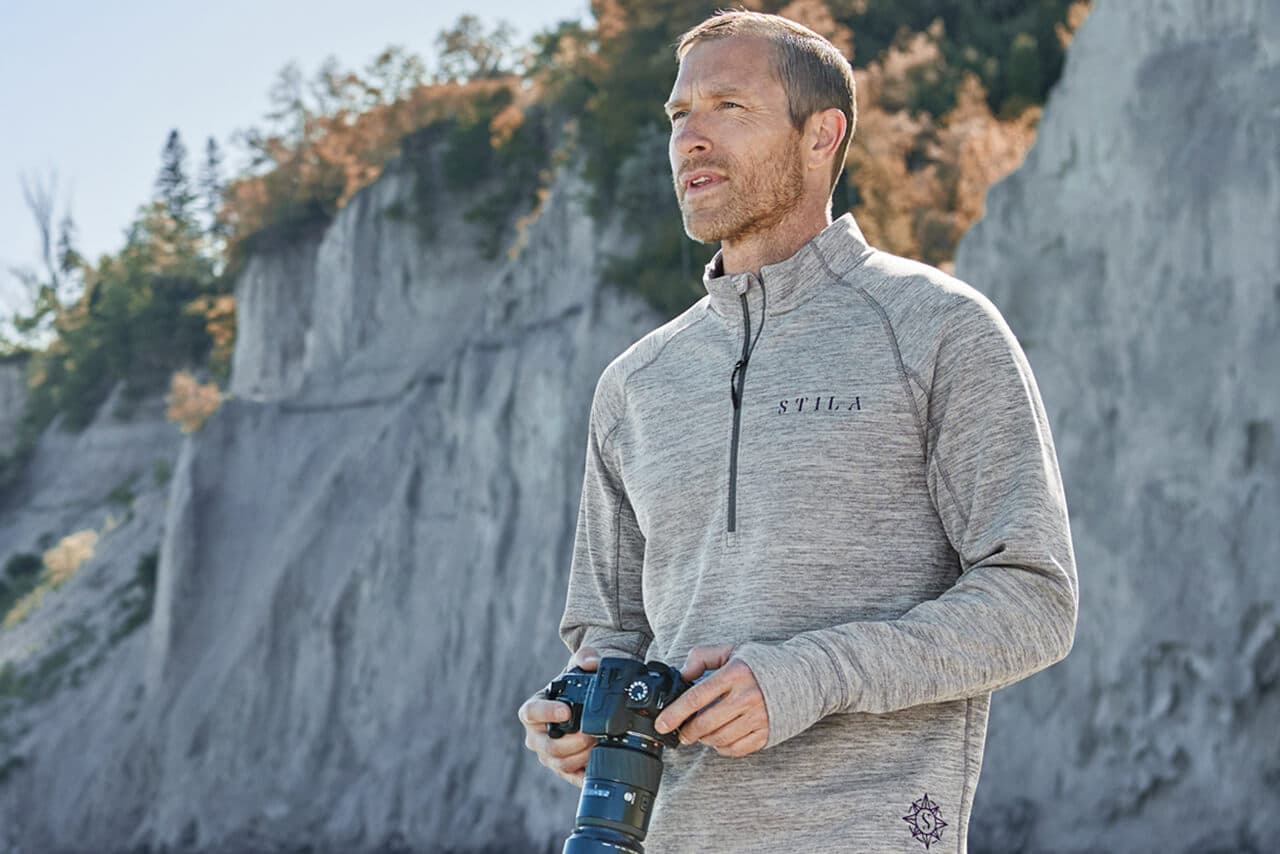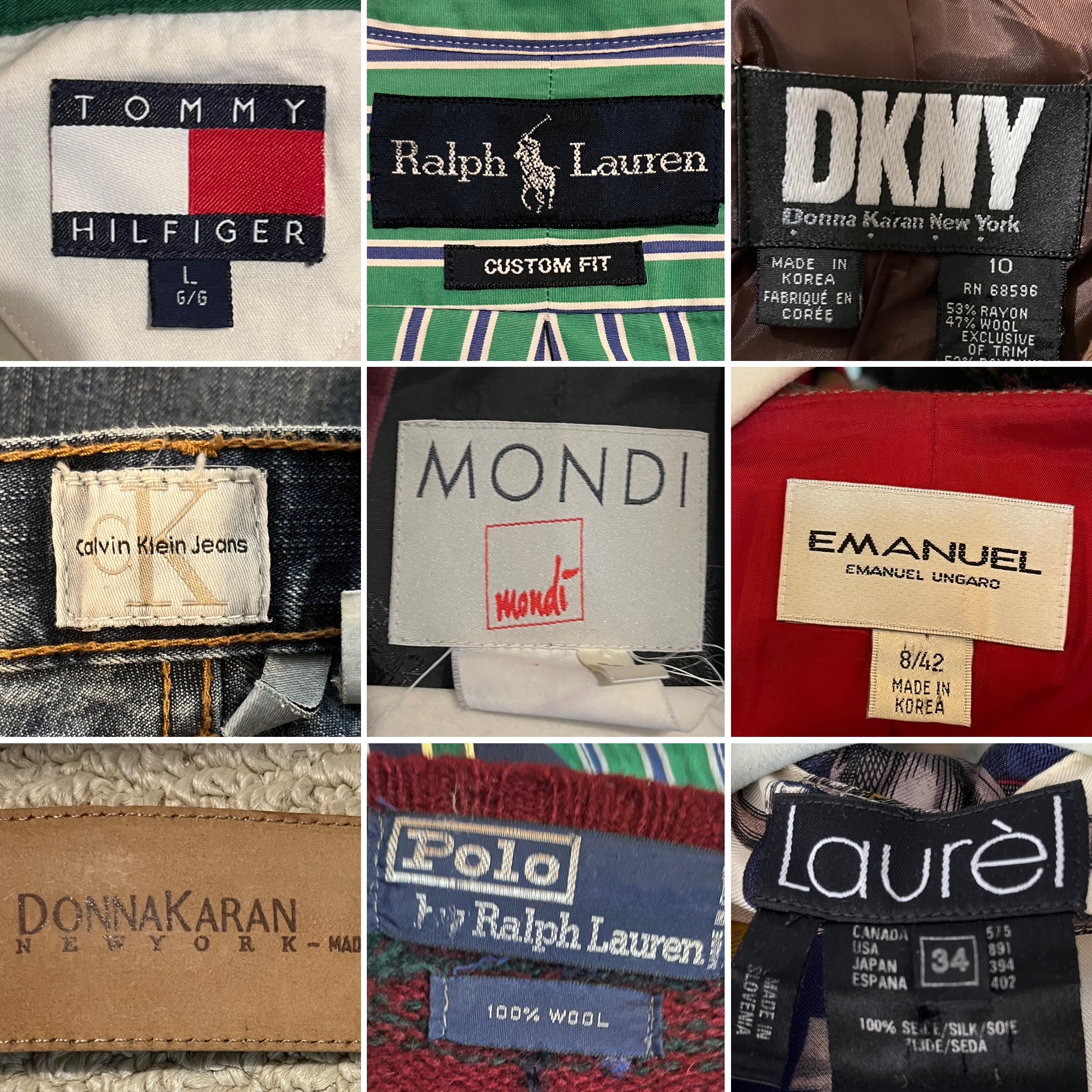Branded Clothing for Cold Climates: Which Fabrics Actually Work?
Branded Clothing for Cold Climates: Which Fabrics Actually Work?
Blog Article
The Value of Sustainable Clothes: How It Affects the Environment and Your Closet
Sustainable clothing is progressively recognized for its vital role in minimizing the environmental impact of the rapid apparel industry. By concentrating on eco-friendly products and moral manufacturing methods, it resolves pushing eco-friendly problems. This change not just benefits the planet however also affects customer options, leading to a much more thoughtful approach to closet monitoring. Recognizing these dynamics increases important inquiries concerning fashion's future and personal obligation in shaping it.
The Environmental Impact of Rapid Style

Advantages of Sustainable Products
Sustainable materials use considerable benefits, especially through environment-friendly fabric choices that reduce environmental damage. These products also demonstrate durability and longevity, decreasing the need for frequent replacements. Consequently, they contribute to a much more lasting fashion business and advertise accountable customer actions.
Eco-Friendly Material Choices
While the fashion business has long been associated with rapid patterns and environmental harm, the surge of green fabric selections presents a transformative possibility. Sustainable products such as organic cotton, hemp, and Tencel have obtained appeal because of their reduced eco-friendly impact. These fabrics are often generated without damaging chemicals and need much less water, decreasing their carbon footprint - Branded Clothing. In addition, several environment-friendly textiles are naturally degradable, adding to a round economy by minimizing waste. Choosing lasting products not just supports eco liable practices however additionally promotes much healthier environments. As customers come to be much more familiar with their acquiring power, the demand for eco-friendly fabrics motivates brand names to introduce and take on more sustainable manufacturing methods, ultimately benefiting the planet and future generations
Durability and Longevity Advantages
Numerous customers are significantly recognizing the resilience and durability benefits of sustainable materials in their garments selections. Unlike standard fabrics, lasting materials such as natural cotton, hemp, and recycled polyester are crafted to withstand wear and tear, resulting in garments that last longer. This minimized regularity of substitute not just conserves consumers money with time but also decreases waste produced by fast fashion. Additionally, lasting apparel typically utilizes eco-friendly manufacturing approaches that boost textile strength, adding to a decrease in the general carbon impact. By purchasing long lasting apparel, customers can grow a more sustainable wardrobe while appreciating premium items that maintain their visual and capability with time. Durability and durability stand as essential advantages of selecting sustainable products.
Decreasing Waste Through Lasting Practices
Minimizing waste in the fashion business can be attained with innovative methods such as upcycling and repurposing materials. In addition, embracing minimal wardrobe techniques motivates consumers to focus on high quality over quantity, inevitably reducing clothing usage. Together, these techniques contribute considerably to a much more sustainable apparel version.
Upcycling and Repurposing Materials
Upcycling and repurposing products have arised as innovative strategies in the apparel industry, transforming thrown out textiles into beneficial brand-new items. This strategy not only reduces waste however also motivates creative thinking and individuality in clothing layout. By taking old garments and materials, designers can create one-of-a-kind pieces that reflect personal style while lowering the demand for new resources. Furthermore, upcycling commonly requires less power and water compared to typical production processes, substantially lowering the environmental footprint of fashion. As customers come to be more conscious of sustainability, the popularity of upcycled garments proceeds to climb, advertising a circular economic situation. Inevitably, these techniques add to a more lasting future, where style focuses on environmental wellness over fast production and consumption.

Minimalist Wardrobe Approaches
As people increasingly seek to minimize their environmental impact, adopting minimalist wardrobe strategies has gotten traction as an efficient method to sustainable fashion. These strategies emphasize high quality over quantity, encouraging customers to curate a smaller sized collection of functional, long lasting garments. By concentrating on ageless items that can be combined and matched, people can lower the regularity of acquisitions and ultimately lower waste.Additionally, minimalism promotes mindful intake, advising consumers to review the ethical and ecological implications of their choices. This approach not just cultivates a more lasting way of life but additionally simplifies everyday decision-making concerning clothes. As individuals accept minimalist concepts, they add to a style culture that values sustainability and liable consumerism, eventually leading to an extra eco-conscious society.
The Duty of Honest Labor in Lasting Fashion
While several consumers are increasingly knowledgeable about the ecological repercussions of their clothing selections, the importance of moral labor methods in sustainable fashion can not be ignored. Honest labor encompasses reasonable incomes, safe working conditions, and respect for employees' legal rights, creating the foundation of responsible fashion production. Brand names that prioritize honest labor not just uplift areas yet also set a requirement for liability in the industry.Moreover, the integration of moral methods fosters transparency, enabling consumers to make educated selections about their purchases. This method contrasts sharply with rapid style's exploitative labor designs, which frequently focus on profit over people. By sustaining business committed to ethical labor, consumers add to a system that values human self-respect alongside environmental sustainability. Honest labor is not merely an add-on; it is important to the broader goal of lasting fashion, ensuring that the quest for eco-friendliness does not come at the expenditure of human legal rights.
The Effect of Sustainable Clothing on Carbon Emissions
Lasting clothes has the potential to significantly reduce carbon exhausts connected with the garment industry. Standard garment manufacturing contributes especially to greenhouse gas emissions, mainly as a result of energy-intensive manufacturing procedures and making use of non-renewable sources. In comparison, sustainable style concentrates on eco-friendly products, such as organic cotton or recycled fibers, which frequently call for less power to produce.Moreover, sustainable brand names have a tendency to adopt much more efficient production practices, minimizing waste and decreasing general exhausts. By prioritizing resilience and classic design, lasting clothing motivates consumers to buy less regularly, further lowering the carbon footprint connected with overconsumption.Additionally, many lasting brand names are dedicated to openness in their supply chains, making it possible for customers to make informed selections that straighten with their values. Eventually, changing in the direction of lasting clothing can lead to a considerable decrease in carbon exhausts, adding to a much healthier world Go Here and an extra sustainable future for the apparel industry.
Sustaining Regional Economic Climates With Sustainable Options
The shift towards lasting clothing not only addresses environmental worries yet also significantly advantages neighborhood economies. By choosing sustainable style, customers commonly sustain local artisans and small companies, boosting area strength. These ventures typically operate a smaller sized range, focusing on craftsmanship and honest methods over mass production.Investing in locally made sustainable apparel fosters job creation and stimulates economic growth within communities. As consumers become much more familiar with the environmental impact of their purchases, they progressively choose items that reflect their worths. This need urges neighborhood suppliers to adopt sustainable techniques, adding to a round economy.Moreover, sustaining regional services lowers transport discharges, lining up with eco-conscious consumer habits. The interconnectedness of sustainable garments and neighborhood economic climates highlights the vital role that specific options play in promoting both economic and ecological health and wellness. By promoting these local links, communities can grow while additionally working in the direction of a much more lasting future.
Changing Your Closet: Tips for a Lasting Wardrobe
As people seek to lower their environmental influence, changing a closet right into a sustainable closet becomes a crucial step. One reliable method is to evaluate existing garments, maintaining only products that are worn consistently and that straighten with sustainability goals. Prioritizing top quality over quantity is essential; investing in sturdy pieces from green brands can substantially decrease waste.Additionally, incorporating pre-owned items he said can revive a closet while lessening ecological damages. Organizing apparel swaps with pals or giving away unused items can even more advertise sustainability.When shopping, people must look for products that are organic, recycled, or biodegradable, and avoid fast style stores - Branded Clothing. Finally, practicing mindful usage by thoughtfully taking into consideration each acquisition can add to an extra sustainable lifestyle. By applying these tips, one can create a wardrobe that reflects individual style while sustaining ecological stewardship
Regularly Asked Inquiries
Exactly How Can I Determine Lasting Apparel Brands?
To recognize lasting garments brands, one ought to investigate materials used, look for certifications like Fair Trade, and examine the brand name's openness regarding their production procedures, labor techniques, and environmental impact, guaranteeing eco-friendly and ethical practices are focused on.
What Are the Prices Related To Lasting Style?
The expenses connected with sustainable fashion can vary considerably. Greater manufacturing costs, ethical sourcing, and environment-friendly products often bring about boosted retail prices, which might hinder some customers while appealing to eco aware buyers.
Can Sustainable Clothing Be Elegant and Trendy?
Lasting apparel can without a doubt be fashionable and stylish. Developers progressively focus on ingenious materials and ethical manufacturing methods, proving that style and sustainability can coexist. Consumers currently have diverse choices that mix aesthetics with ecological awareness.
Exactly How Does Laundering Clothes Affect Their Sustainability?
Washing garments considerably impacts sustainability by consuming water and power, adding to contamination, and causing microplastic launch. Frequent washing can break down materials, reducing their lifespan and boosting the demand for replacements, eventually intensifying environmental worries.
What Is the Life-span of Sustainable Clothing Contrasted to Fast Style?
The life-span of lasting clothes usually exceeds that of rapid style products, typically long-term a number of years as a result of top quality materials and craftsmanship. On the other hand, fast style garments might deteriorate swiftly, necessitating even more regular replacements. Sustainable clothes is significantly recognized for its important duty in reducing the environmental effect of the rapid fashion industry. While several consumers are progressively aware of the environmental consequences of their apparel selections, the value of moral labor methods in sustainable fashion can not be overlooked. Branded Clothing. Lasting apparel has the possible to greatly reduce carbon exhausts Look At This linked with the style market. In contrast, sustainable style concentrates on green products, such as organic cotton or recycled fibers, which usually call for less energy to produce.Moreover, sustainable brand names have a tendency to embrace more effective manufacturing practices, minimizing waste and reducing general emissions. By focusing on resilience and timeless design, lasting garments motivates consumers to purchase less regularly, more decreasing the carbon impact associated with overconsumption.Additionally, numerous lasting brand names are committed to transparency in their supply chains, enabling customers to make enlightened options that straighten with their values
Report this page